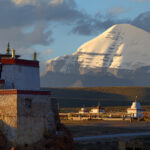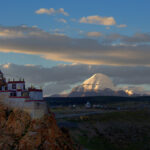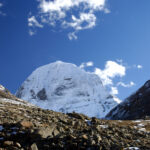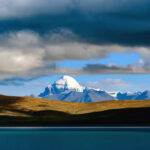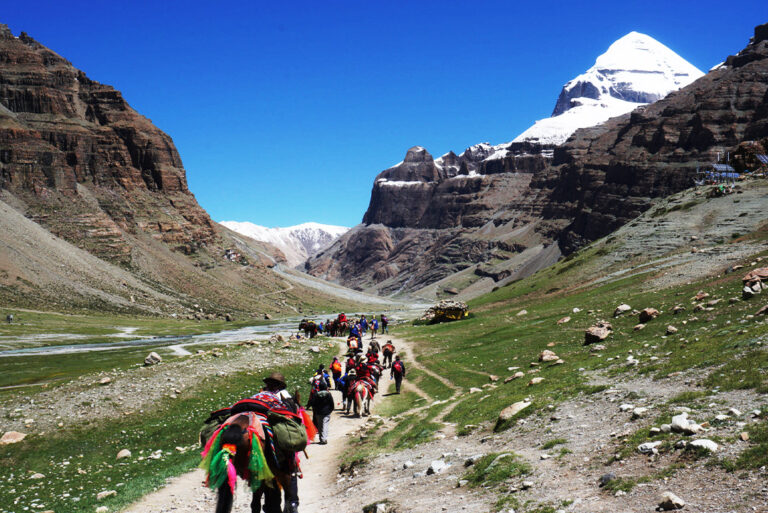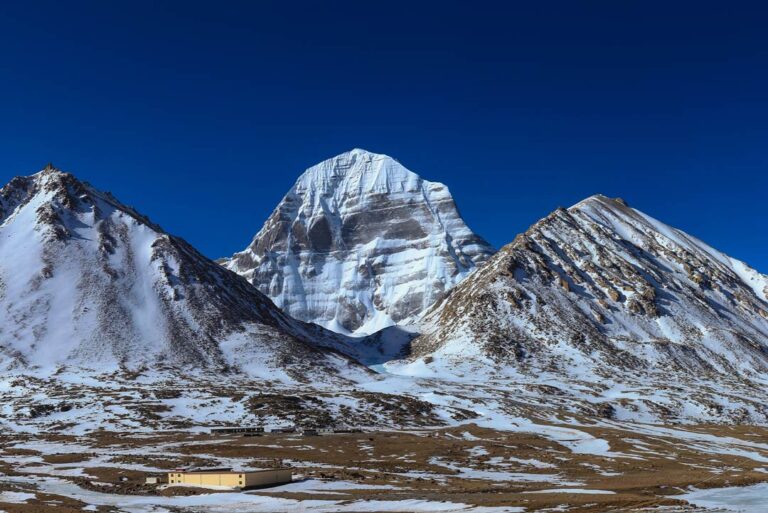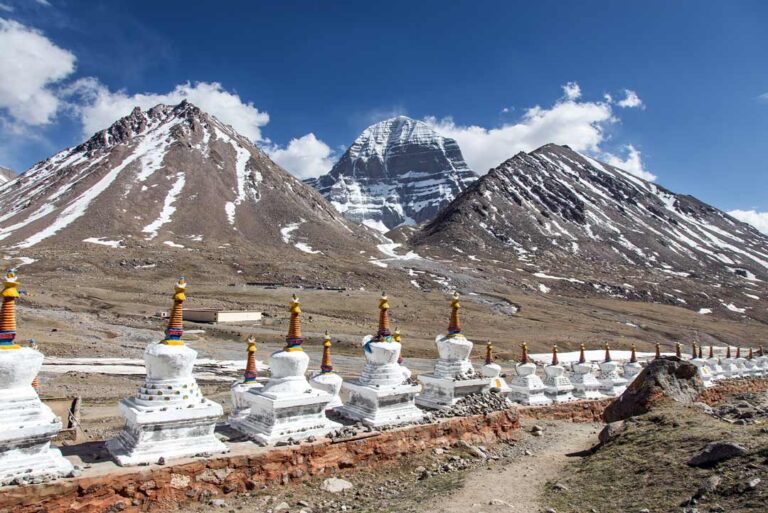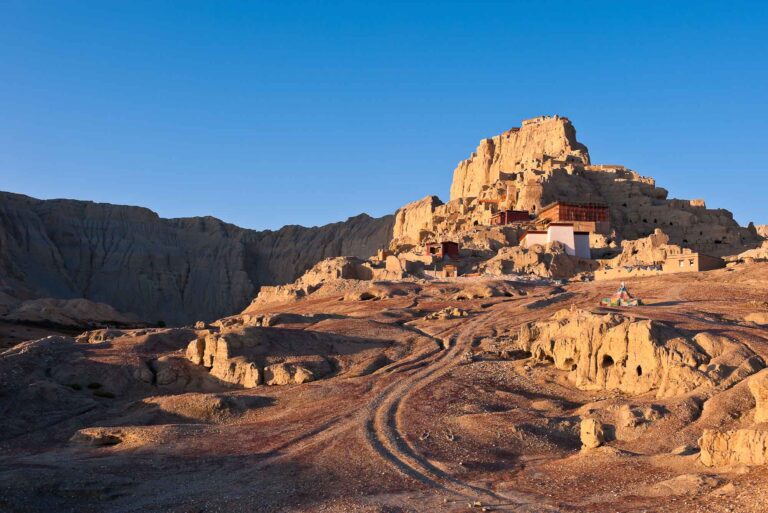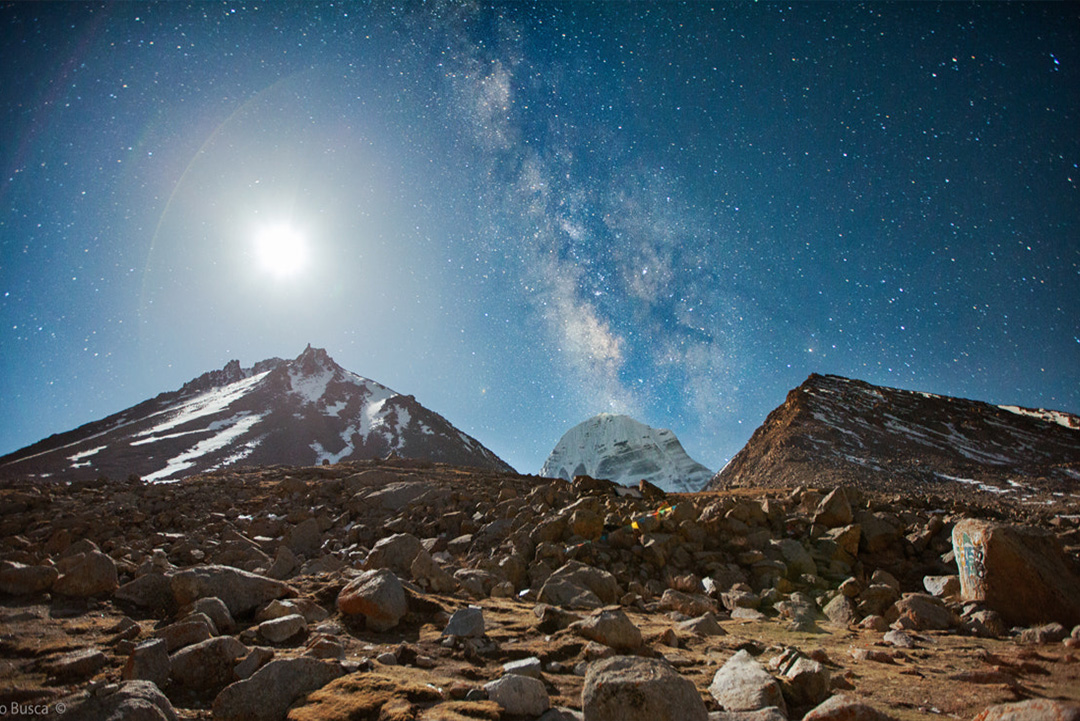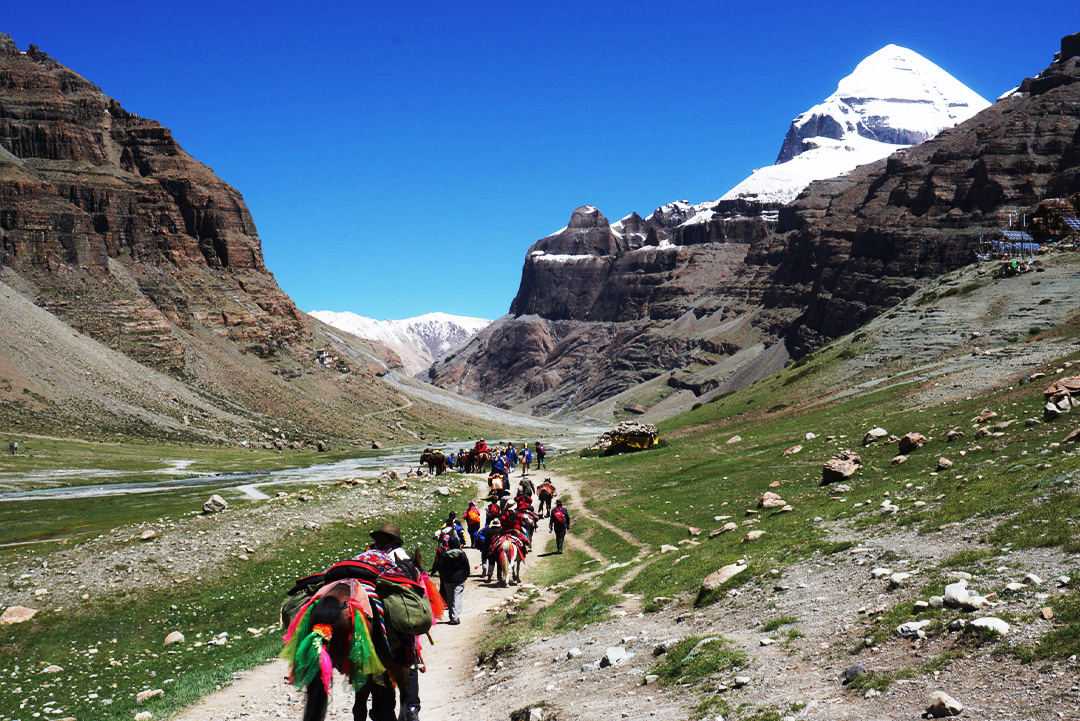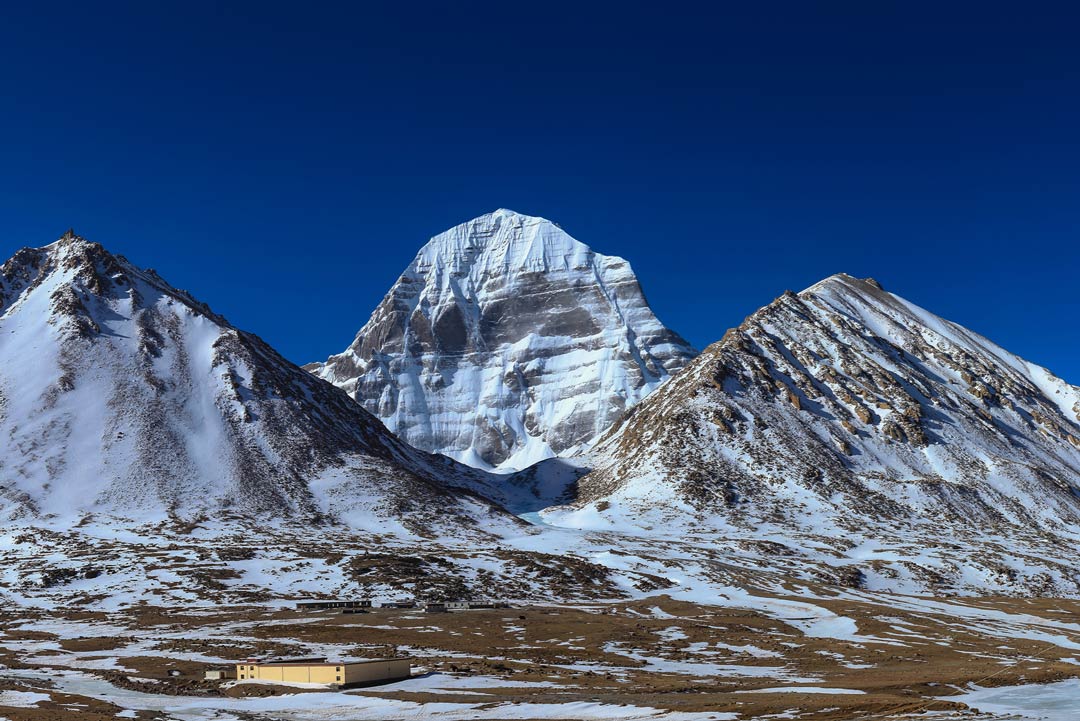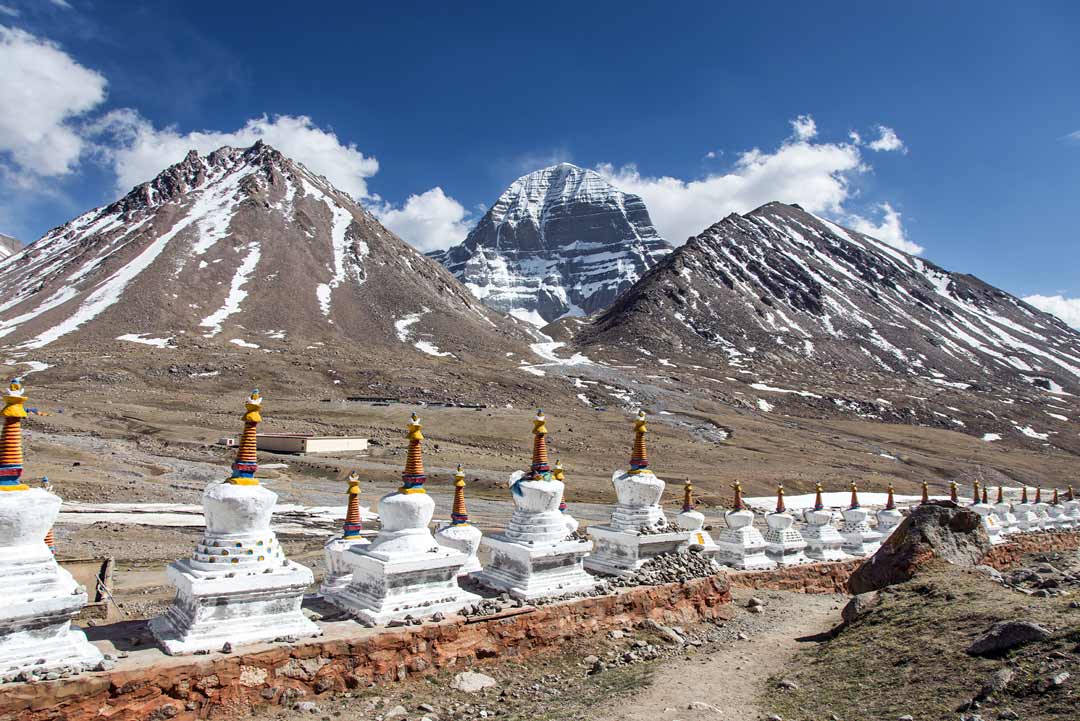Tibet Travel Guide
Tibet, often referred to as the “Roof of the World,” is a mystical and captivating land where the boundaries between heaven and earth seem to blur. Situated in the heart of the Himalayas, this region boasts landscapes that will leave you breathless and a cultural heritage as vast as the high mountains that cradle it. In this Tibet travel guide, we’ll be your compass on a journey filled with unique spiritual experiences, awe-inspiring vistas, and unforgettable encounters.
Nestled in the southwestern part of China, Tibet is a destination that has long fascinated adventurers, spiritual seekers, and explorers from around the globe. Its unique blend of Buddhism, Tibetan traditions, and breathtaking natural beauty creates an unparalleled travel experience. Whether you’re a seasoned traveler or a first-time explorer, Tibet has a lot to offer.
Our comprehensive guide will take you through every aspect of planning your trip to this enigmatic land. From the crucial steps of obtaining the necessary permits to the practicalities of exploring monasteries and natural wonders, we’re here to ensure that your journey is seamless and extraordinary.
But Tibet is more than just a travel destination; it’s a profound spiritual and cultural encounter that has the power to change your perspective on life. It’s a place where ancient traditions meet the modern world, where you can witness monks chanting in centuries-old monasteries and then connect with locals on the latest social media trends.
So, fasten your seatbelt and embark on this voyage of discovery with us. We’ll navigate the intricate process of obtaining permits, help you find the best accommodations, and introduce you to the rich tapestry of Tibetan culture and customs. Your journey to Tibet is not just a trip; it’s a transformative odyssey.

Planning Your Tibet Journey
Obtaining Chinese Visa and Tibet Permit
Your journey to Tibet begins with the essential documents: a Chinese visa and a Tibet permit. For most travelers, a Chinese tourist visa is a prerequisite. Here’s a step-by-step guide to help you secure these vital documents:
1. Apply for a Chinese Visa:
- Initiate the process by visiting your nearest Chinese consulate or embassy. It’s crucial to do this well in advance of your planned trip to avoid any last-minute complications.
2. Visa Application Requirements:
- If you’re not from a visa-exempt country, you’ll need to compile several documents to support your visa application, including:
- Round-trip flight tickets.
- Hotel reservations for your stay in China.
- Detailed tour information and itinerary.
3. Invitation from Tibet Tourism Bureau:
- When applying for your Chinese visa, you may be required to provide an invitation from the Tibet Tourism Bureau. This is where we come in – we can assist you in obtaining this invitation, making the process smoother and less confusing.
Travel Methods
Tibet offers multiple ways to reach its breathtaking landscapes and vibrant culture. Let’s explore your travel options:
By Air:
- Flying is the most convenient and often the quickest option. There are frequent domestic flights from major Chinese cities to Lhasa, Tibet’s capital.
- An international flight is also available from Kathmandu to Lhasa, offering an exciting entry point to Tibet.
- Travelers journeying from Kathmandu to Lhasa have the option of applying for the Chinese Group Visa, making the process more accessible.
By Rail:
- The train journey to Tibet is an extraordinary experience, offering stunning views of the landscapes. However, it’s the lengthiest option.
- An essential note is that train tickets can only be purchased by Chinese citizens, which means we’ll take care of the booking for you.
By Road:
- For the adventurous souls, entering Tibet by road is an option, but it comes with a unique set of requirements.
- You must be accompanied by a guide, as independent travel in Tibet is not allowed. The permit process is similar to other methods, with additional requirements such as car registration and a temporary driver’s license.
- It’s advisable to allocate around 30 days for this process, ensuring that all documentation is complete before embarking on this exciting road journey.
As you plan your Tibet journey, these considerations will help you make informed decisions about the best way to reach this remarkable destination. Each mode of travel offers a unique experience, so choose the one that aligns with your preferences and expectations.
Accommodation in Tibet
Tibet caters to a diverse range of accommodation options, ensuring that every traveler finds a place that suits their preferences and budget. Whether you’re seeking the comfort of luxury hotels or the authenticity of rustic guesthouses and tented hostels, Tibet has you covered.
In Cities like Lhasa:
- Luxury Hotels: If you’re accustomed to the finer things in life, Tibet’s major cities, particularly Lhasa, boast international hotel chains. These luxury accommodations, like the St. Regis or the Shangri-La, provide an opulent retreat where you can indulge in lavish comforts after a day of exploration.
- Tibetan-Owned Boutique Hotels: For a more authentic Tibetan experience, consider staying in boutique hotels such as the Shambhala in Lhasa. These establishments often feature traditional Tibetan decor, adding a unique cultural touch to your stay.
- Three-Star Options: If you prefer a balance between comfort and budget, you’ll find three-star hotels like the famous Yak Hotel in Lhasa. These options provide comfortable lodgings without breaking the bank.
In Remote Areas:
In more remote regions of Tibet, such as areas near Mount Everest, you’ll encounter different accommodation options that are distinct from city comforts:
- Guesthouses: In these less-urban areas, travelers are often accommodated in guesthouses. These may range from basic to more comfortable, but they offer a chance to experience the local lifestyle and hospitality.
- Tented Hostels: At the base camp of Mount Everest, you can choose to stay at the Rongbuk Monastery guesthouse, providing simple yet decent rooms. Alternatively, you can opt for tented hostels made of yak wool. These cozy tents typically accommodate five to six people in bunk beds, and at the center, a Tibetan-style stove fueled by yak dung keeps you warm through the night.
Accommodation Facilities:
- In most hotels, rooms come with en-suite bathrooms, providing a private and comfortable space.
- Guesthouses and tented hostels may have shared or public toilet facilities, so be prepared for communal usage.
- Hot running water is usually available year-round in most hotels. However, the supply of hot water may be influenced by the weather, particularly when using solar water heaters. Even on cloudy days, you can expect some hot running water in the early evening.
When choosing your accommodation in Tibet, consider your budget, your desired level of comfort, and the specific areas you plan to visit. Our agency collaborates with various accommodation providers, so we can often secure better deals than what you might find online. This ensures that you have a cozy and memorable stay in Tibet while staying within your budget.
Best Time to Visit Tibet
The ideal time to visit Tibet largely depends on your travel itinerary, personal preferences, and the experiences you seek. Tibet’s diverse climate and unique landscapes offer distinct advantages during different seasons.
High Season (April to October):
- Milder Weather: The high season in Tibet falls between April and October, making it the most popular time to visit. During these months, you can expect milder and more pleasant weather. Days are generally warmer and sunnier, allowing for comfortable exploration.
- Stunning Scenery: Spring and summer transform Tibet into a breathtaking landscape with blooming flowers, lush meadows, and crystal-clear skies. It’s an excellent time for photography and enjoying the vibrant natural beauty.
- Peak Tourism: As the best time for traveling, these months attract a significant number of tourists. Therefore, expect more crowds at popular tourist destinations.
Winter Months (November to February):
- Less Crowded: If you prefer a quieter and more serene experience, consider visiting Tibet during the winter months. November to February sees fewer tourists, which can offer a more peaceful and intimate encounter with the region.
- Budget-Friendly: With fewer travelers, prices for accommodations, tours, and activities tend to be more budget-friendly during the winter. You can often find great deals and discounts.
- Unique Experiences: While the weather can be cold, this is also a fantastic time to witness Tibetan culture and traditions up close. You’ll have a chance to participate in various festivals and celebrations that are an integral part of Tibetan life.
Chinese Holidays:
It’s important to keep Chinese holidays in mind when planning your Tibet trip. Certain holiday periods, such as the first week of May, the first week of April, late January, early February, and the first week of October, coincide with major Chinese holidays. During these times, there is a significant influx of local tourists, which can lead to increased prices and crowded attractions. If you prefer a quieter experience, it’s advisable to avoid traveling during these peak holiday periods.
Ultimately, the best time to visit Tibet depends on your preferences and the experiences you seek. Whether you choose to explore during the vibrant spring and summer or opt for a more peaceful winter adventure, Tibet offers a unique and unforgettable journey year-round.
Booking a Tibet Tour
When planning your journey to Tibet, you have the choice of exploring this captivating region through either group tours or private tours, each offering unique advantages tailored to your preferences and travel style.
Group Tours:
- Cost-Effective: Group tours are an excellent choice for budget-conscious travelers. They are generally more cost-effective as the expenses are shared among the group, making it an affordable option to explore Tibet.
- Meet Fellow Travelers: Group tours provide an opportunity to meet and connect with fellow travelers from different parts of the world. It’s a chance to share experiences, stories, and create lasting memories together.
- Scheduled Departures: Group tours typically have scheduled departure dates, allowing you to choose a date that suits your travel plans. This can be convenient for those with fixed vacation schedules.
- Pre-Planned Itineraries: These tours come with pre-planned itineraries, making the travel process more straightforward. You can simply join the tour and follow the set schedule.
Private Tours:
- Customization: Private tours offer a high degree of customization. You can tailor your itinerary to match your interests, preferences, and travel goals. Whether you want to focus on specific cultural experiences, explore natural wonders, or delve into unique activities, a private tour allows you to design your perfect journey.
- Personalized Experiences: With a private tour, you’ll enjoy personalized experiences, undivided attention from your guide, and the flexibility to explore at your own pace. Your tour can be adapted to your preferences throughout the journey.
- Exclusive Access: Private tours often provide exclusive access to certain sites, allowing you to have a more intimate and private experience at key attractions.
- Flexible Departure: Private tours offer flexibility in terms of departure dates. You can choose the start date that aligns with your schedule, making it a convenient option for travelers with specific timelines.
Choosing a Tibetan Travel Agency:
No matter whether you opt for a group or private tour, selecting a reputable Tibetan travel agency is crucial. When making your decision, consider the following factors:
- Experience: Look for agencies with a proven track record in organizing Tibet tours. Experienced agencies are well-equipped to handle the unique challenges of traveling in this remote region.
- Local Expertise: Agencies based in Tibet often have a deeper understanding of the local culture, customs, and logistics, enhancing your overall travel experience.
- Reviews and Recommendations: Read reviews from previous travelers and seek recommendations from friends or travel forums to ensure the agency’s reliability and customer satisfaction.
- Customization Options: If you prefer a private tour, ensure that the agency can accommodate your specific requests and tailor the itinerary to your liking.
- Transparency: The agency should be transparent about costs, permit procedures, and what is included in the tour package.
Booking a Tibet tour is a gateway to an extraordinary adventure, and your choice between group and private tours will depend on your travel goals and preferences. With the right Tibetan travel agency, you can embark on a journey that introduces you to the captivating culture, stunning landscapes, and spiritual wonders of Tibet.
Dining in Tibet
Tibetan cuisine is a delightful fusion of unique flavors and traditional culinary practices. When dining in Tibet, you’ll have the opportunity to savor a wide range of dishes that reflect the region’s rich culture and geography. Here’s what you need to know about dining in Tibet:
Tibetan Cuisine:
- Flavorful Traditions: Tibetan cuisine is known for its distinct flavors, with a strong emphasis on hearty, warming dishes suitable for the high-altitude environment. Yak meat, barley, and dairy products are staples in Tibetan cooking.
- Momos: One of the most popular Tibetan dishes is momo, which are steamed or fried dumplings filled with various ingredients like meat, vegetables, or cheese. These tasty morsels are often served with a side of dipping sauce.
- Tsampa: Tsampa, a roasted barley flour, is a staple food in Tibet. It’s typically mixed with butter tea to create a nourishing and energy-packed meal.
- Yak Meat: Yak meat features prominently in Tibetan dishes, and you can try specialties like yak stew or yak butter tea. The meat is lean and flavorful, making it a must-try for adventurous food enthusiasts.
Dining Options:
When dining in Tibet, you’ll find a range of choices, including local Tibetan food and Western options. Your guide can assist you in selecting the best places to dine, catering to your preferences and dietary requirements.
- Local Tibetan Restaurants: In cities like Lhasa, Shigatse, and Nyintri, you can explore local Tibetan restaurants that offer a taste of traditional cuisine. Expect to pay around $7 to $14 for lunch and dinner in these urban areas.
- Remote Areas: In more remote towns and villages, prices for meals are generally lower, ranging from $4 to $9. These areas may offer a more rustic dining experience, but the chance to savor authentic Tibetan dishes makes it well worth the visit.
- Vegetarian Options: Vegetarians will find Tibet to be a friendly destination. Due to the Tibetan people’s strong connection to Buddhism, many Tibetans follow a vegetarian diet. This means that even in remote areas, you’ll find a variety of vegetarian dishes to choose from.
- Provisions: If you have specific dietary requirements, consider buying provisions like snacks or specialty food items in larger cities such as Lhasa. This ensures you have suitable options while traveling in more remote regions.
Challenges and Solutions:
- Water: While tap water may be safe for locals, travelers are advised to avoid drinking it due to differences in bacterial strains. Your guide will provide bottled water throughout the tour, and it’s recommended to carry a reusable water bottle.
- Language Barrier: English may not be widely spoken in local restaurants, especially in remote areas. However, your guide can assist in translating your dietary preferences and restrictions to ensure a pleasant dining experience.
Dining in Tibet is not just about savoring delicious food; it’s an opportunity to immerse yourself in the local culture and traditions. Whether you’re trying momos in Lhasa or enjoying a hearty yak stew in a remote village, each meal in Tibet is a unique experience that adds to the richness of your journey.
Altitude Sickness and Acclimatization
Altitude sickness, often referred to as acute mountain sickness (AMS), is a common concern when traveling to Tibet due to its high elevation. This natural response to decreased oxygen levels can affect anyone, regardless of age, fitness, or previous travel experiences. To ensure a safe and enjoyable journey, it’s important to understand altitude sickness and how to acclimatize properly.
Understanding Altitude Sickness:
Altitude sickness occurs when the body struggles to adjust to the reduced oxygen levels at higher elevations. It is essential to recognize the symptoms, which may include:
- Fatigue: Feeling unusually tired and lacking energy.
- Dizziness: Experiencing lightheadedness and unsteadiness.
- Nausea and Vomiting: Feeling queasy and potentially vomiting.
- Headache: Developing a throbbing or constant headache.
- Loss of Appetite: Having little to no desire to eat.
- Accelerated Pulse: Noticing a faster heart rate.
- Difficulty Sleeping: Finding it challenging to rest at night.
It’s important to note that altitude sickness can vary in severity from person to person. Some may experience mild symptoms, while others may have more intense reactions. In severe cases, altitude sickness can lead to high-altitude cerebral edema (HACE) or high-altitude pulmonary edema (HAPE), both of which are life-threatening conditions.
Proper Acclimatization:
Proper acclimatization is the key to avoiding altitude sickness and ensuring an enjoyable trip to Tibet. Here are some essential tips to help you acclimatize effectively:
- Avoid Strenuous Activities: In the days leading up to your arrival in Tibet and during the first few days of your stay, avoid strenuous physical activities. Even simple tasks like climbing stairs can be more exhausting at higher elevations.
- Stay Hydrated: Drink plenty of water to stay well-hydrated. Dehydration can exacerbate the symptoms of altitude sickness. It’s recommended to consume 4 to 6 liters of water per day, as the dry climate and high altitude can lead to increased water loss.
- Prescribed Medications: Consult with your physician before traveling to Tibet, especially if you have a history of altitude sickness. They may prescribe medications like Diamox to help prevent and alleviate symptoms.
- Preparation: Maintaining good physical fitness before your trip can also contribute to better acclimatization. Engaging in regular physical activities and exercises can help your body adapt to the reduced oxygen levels.
Your Guide’s Role:
Your guide, who is well-trained and experienced in high-altitude travel, will play a crucial role in ensuring your safety and comfort. They are knowledgeable about altitude sickness and can provide valuable guidance and assistance throughout your journey. In case you experience symptoms of altitude sickness, your guide will take appropriate action to address the situation.
Medical Facilities:
In Tibet, there are medical facilities available 24/7, and your guide can arrange medical attention if needed. In extreme cases, medevac services can be provided to transport individuals to lower elevations for proper treatment.
Do’s and Don’ts:
- Avoid Showering: It’s advisable not to take a shower or bath on your first day in Lhasa, as it can contribute to dehydration. Instead, use wet wipes for freshening up.
- Stay Warm: Dress in layers to stay warm, as the weather can be unpredictable at high altitudes. This can help prevent colds or fevers, which could worsen altitude sickness.
- No Alcohol: Refrain from consuming alcohol during the first few days in Tibet, as it can interfere with your body’s ability to acclimatize and absorb oxygen.
- Drink Ginger Tea: Drinking ginger tea with lemon and honey is recommended, as ginger is known for its potential to alleviate symptoms of altitude sickness.
Altitude sickness is a real concern when traveling to Tibet, but with proper preparation, acclimatization, and the support of your guide, you can minimize the risks and enjoy a safe and memorable journey in this extraordinary land.
What to Bring to Tibet
Packing for Tibet requires careful consideration due to its unique combination of high altitude, fluctuating weather, and diverse landscapes. Whether you’re exploring the ancient monasteries of Lhasa, embarking on treks in the Himalayas, or visiting remote Tibetan villages, being well-prepared can greatly enhance your travel experience. Here’s a comprehensive guide on what to bring to Tibet:
1. Clothing:
- Warm Layers: Tibet’s weather can be unpredictable. Pack thermal clothing, sweaters, and insulated jackets to stay warm, especially during the evenings and at higher altitudes.
- Comfortable Shoes: Choose sturdy, comfortable, and waterproof hiking boots or walking shoes for exploring various terrains. Additionally, bring slippers or light shoes for indoor use.
- Rain Gear: A compact, waterproof jacket or poncho can come in handy during sudden rain showers or while trekking in damp conditions.
- Sun Protection: Pack a wide-brimmed hat, sunglasses with UV protection, and high SPF sunscreen to shield yourself from the strong Himalayan sun.
2. Accessories:
- Backpack: A comfortable, lightweight daypack is essential for carrying water, snacks, and your daily essentials.
- Gloves and Scarves: Keep your hands and neck warm with gloves and scarves, especially if you plan to visit during the cooler months.
- Thermal Underwear: For added insulation, consider packing thermal underwear to wear under your clothing.
3. Personal Care:
- Moisturizers and Lip Balm: Tibet’s dry climate can be harsh on your skin and lips. Be sure to bring moisturizers and lip balm to prevent dryness and chapping.
- Toiletries: While most accommodations provide basic toiletries, bring your preferred personal items, such as toothpaste, toothbrush, and shampoo.
- Prescription Medications: If you require specific medications, ensure you have an adequate supply for the duration of your trip.
4. Tech and Gadgets:
- Camera and Binoculars: Tibet offers stunning vistas and unique wildlife. Don’t forget to bring a camera and binoculars to capture the breathtaking scenery and wildlife sightings.
- Universal Adapter: Tibet uses Type C, E, and F plugs. A universal adapter will allow you to charge your electronic devices.
5. Travel Documents:
- Passport and Visa: Your passport must be valid for at least six months beyond your intended departure date. Carry both your passport and Chinese visa.
- Tibet Permit: Ensure you have your Tibet Travel Permit, which will be organized by your tour agency.
- Copies of Documents: Make photocopies or digital scans of important documents such as your passport, visa, permits, and travel itinerary.
6. Personal Health Items:
- First Aid Kit: A basic first aid kit with essentials like adhesive bandages, antiseptic wipes, pain relievers, and motion sickness medication is wise to have on hand.
- Water Purification: Consider a portable water purifier or purification tablets to ensure you have access to safe drinking water, especially when trekking in remote areas.
7. Entertainment:
- Books or E-Readers: Long journeys can benefit from entertainment options. Bring a book or e-reader to pass the time during flights or train rides.
- Travel Journal: Capture your thoughts and experiences in a travel journal to create lasting memories.
Remember that over-packing can be burdensome, given the limited space and weight allowances on domestic flights and trains in Tibet. It’s often possible to purchase items like clothing and toiletries in larger cities, so consider the essentials and your specific itinerary when packing.
By ensuring you have these essentials on your Tibet journey, you’ll be well-prepared to explore the wonders of this unique and captivating region, from the ancient monasteries of Lhasa to the stunning natural beauty of the Himalayas.
Handling Money in Tibet
Understanding how to handle money in Tibet is crucial for a smooth and hassle-free travel experience. While the primary currency used in Tibet is the Chinese yuan (RMB), there are various ways to manage your finances during your journey. Here’s a comprehensive guide to handling money in Tibet:
1. Chinese Yuan (RMB):
- Primary Currency: The Chinese yuan is the official currency of Tibet, and it’s widely accepted for all transactions. Ensure you have enough yuan in cash to cover your expenses, especially when traveling to remote areas where access to ATMs or banks might be limited.
2. Currency Exchange:
- Bank of China: You can exchange major foreign currencies such as US dollars, traveler’s cheques, and Euros at the Bank of China branches in larger Tibetan cities like Lhasa, Shigatse, and Nyingchi. These branches are usually open during regular banking hours.
3. ATM Access:
- Major Cities: In cities like Lhasa and Shigatse, you’ll find ATMs where you can withdraw cash using your credit or debit card. Ensure that your bank card has an international withdrawal feature before your journey.
- ATM Fees: Keep in mind that some ATMs may charge a withdrawal fee, and your home bank might impose foreign transaction fees. It’s advisable to check with your bank about fees associated with international withdrawals.
4. Credit Cards and Mobile Payments:
- Credit Cards: While credit cards are not as widely accepted in Tibet as they are in other parts of the world, some upscale hotels, restaurants, and shops in larger cities may accept Visa and MasterCard. However, cash remains the most reliable form of payment.
- Mobile Payments: Mobile payment services like WeChat Pay and Alipay are increasingly popular in Tibet. Many businesses, especially in urban areas, accept payments through these apps. You can link your international bank card to these mobile payment platforms for added convenience.
5. Traveler’s Checks:
- Less Common: Traveler’s checks have become less common with the availability of ATMs and widespread acceptance of cash. It’s advisable to carry a modest amount as a backup, but not to rely on them as your primary source of funds.
6. Currency Conversion and Exchange Rates:
- Exchange Rates: Be aware of the current exchange rates, which can fluctuate. It’s a good practice to check rates with your bank before your journey.
- Conversion Charges: When exchanging money, inquire about any service charges or fees imposed by banks or exchange bureaus to ensure you receive the most favorable rates.
7. Budget Planning:
- Budget Wisely: Depending on your itinerary, consider the amount of cash you’ll need for accommodations, meals, transportation, and other expenses. Plan your budget carefully and include some extra funds for emergencies.
8. Small Denominations:
- Carry Small Bills: Having smaller denominations of Chinese yuan is practical, especially when shopping in local markets, bargaining, or paying for small items.
By following these guidelines, you can manage your finances effectively and make the most of your Tibet travel experience. Having a combination of Chinese yuan in cash, access to ATMs, and the option to use credit cards or mobile payments provides flexibility for all your financial needs. Remember to check for any travel advisories or specific financial considerations related to Tibet before your trip to ensure a seamless and enjoyable journey.
Communication and Internet Access
Staying connected while traveling in Tibet is essential for both safety and convenience. Tibet has made significant strides in improving communication and internet access for tourists. Here’s what you need to know about keeping in touch during your journey:
1. Wi-Fi Availability:
- Hotels, Restaurants, and Cafes: Most hotels, restaurants, and cafes in urban areas, such as Lhasa, Shigatse, and Nyingchi, offer Wi-Fi access to their guests. While the quality and speed of Wi-Fi can vary, it’s generally reliable in major tourist destinations.
2. Free SIM Cards and Cell Phones:
- Provided by Guides: Your guide, who will accompany you during your Tibet tour, will typically provide you with a local cell phone and a SIM card. This service is often included in your tour package. The provided phone allows you to communicate with your guide and tour group easily.
3. Mobile Hotspot:
- Create Your Hotspot: If you have a smartphone, you can use it as a mobile hotspot to connect other devices like laptops or tablets. Your guide can assist you in setting up a hotspot if needed. Keep in mind that the quality of mobile data may vary outside major urban areas.
4. International Roaming:
- Check with Your Provider: Before your trip, check with your mobile service provider about international roaming plans. While this can be an option for maintaining connectivity, be aware that roaming charges can be quite high.
5. Internet Speed and Accessibility:
- Urban Areas vs. Remote Areas: Internet speeds and accessibility can vary significantly between urban and remote areas. In larger cities like Lhasa, you can expect better connectivity, while in remote regions, you may encounter slower or limited internet access.
6. Local Communication:
- Learn Basic Phrases: It’s helpful to learn a few basic Tibetan phrases or have a translation app on your mobile device for effective communication, especially in more remote areas where English may not be widely spoken.
Tibet’s communication and internet landscape continue to evolve, providing better access for travelers. However, it’s essential to be prepared for variations in internet quality and availability, particularly when exploring remote and high-altitude regions. By taking advantage of the resources provided by your guide and planning your connectivity options in advance, you can ensure you stay connected and informed while enjoying the stunning landscapes and cultural experiences Tibet has to offer
Travel Insurance for Tibet
Travel insurance is an indispensable aspect of planning your journey to Tibet. The remote and high-altitude nature of the region, as well as the potential risks associated with travel, make it essential to secure comprehensive travel insurance. Here’s why it’s highly recommended and a reliable option to consider:
1. Medical Coverage:
- Altitude Sickness: Tibet’s high altitude is a unique challenge. Altitude sickness can affect travelers, and it’s crucial to have insurance that covers medical expenses related to altitude sickness, should it occur. This is particularly important for those who are not acclimated to high altitudes.
2. Trip Cancellation and Interruption:
- Unforeseen Events: Unforeseen events such as flight cancellations, delays, or personal emergencies can disrupt your travel plans. Travel insurance can provide coverage for these situations, helping you recover non-refundable expenses and make alternative arrangements.
3. Emergency Evacuation:
- High-Altitude Evacuation: In extreme cases, where medical emergencies or serious altitude sickness occur, evacuation to lower altitudes or medical facilities may be necessary. Travel insurance can cover the substantial costs associated with such evacuations.
4. Lost or Delayed Luggage:
- Luggage Protection: Baggage delays, loss, or theft can be significant inconveniences during your journey. Travel insurance can reimburse you for the value of your lost or delayed luggage, ensuring you have necessary essentials while abroad.
5. Personal Liability and Legal Protection:
- Coverage for Unforeseen Incidents: While it’s unlikely, situations may arise where you need legal protection or have personal liability. Travel insurance can offer coverage in case you encounter unexpected legal issues.
6. Choose a Reliable Provider:
- World Nomads: Among the reliable options for travel insurance, World Nomads stands out as a provider that offers comprehensive coverage tailored to adventurous and off-the-beaten-path destinations like Tibet. It is widely used by travelers and has a reputation for providing excellent customer service.
7. Customization:
- Select a Plan That Fits: When choosing travel insurance, it’s important to select a plan that fits your specific needs. Ensure that the plan you choose covers not only the altitude-related aspects but also other general travel concerns.
8. Verify Coverage:
- Review Your Policy: Before you embark on your journey to Tibet, review your travel insurance policy carefully. Understand the terms, conditions, and coverage limits, and make sure it meets the requirements of your trip.
Travel insurance provides peace of mind and financial protection, allowing you to fully enjoy your Tibet travel experience. Given the unique challenges that Tibet presents, including its high altitude and remoteness, investing in a reliable travel insurance policy like World Nomads can be a wise decision. With proper coverage, you’ll have the confidence to explore this remarkable destination with the assurance that you’re prepared for any unexpected circumstances that may arise.
Safety and Etiquette in Tibet
Tibet, often referred to as the “Roof of the World,” is a place of profound beauty and unique culture. While it is considered safe for travelers, there are important safety considerations and cultural etiquettes to keep in mind to ensure a smooth and respectful journey. Here are some key points to consider:
1. Safety for Travelers:
- Accompanied by Guides: One of the aspects that contribute to Tibet’s safety for travelers is that you will typically always be accompanied by a guide. For solo travelers or those in a group, this provides an extra layer of security, local knowledge, and assistance should any issues arise during your trip.
- Altitude Precautions: Safety concerns primarily revolve around altitude sickness. To minimize the risks, it’s essential to follow proper acclimatization techniques, which your guide will assist with. Stay hydrated, avoid strenuous activities initially, and take any prescribed medications if required.
- Local Laws: Respect local laws and customs. Certain areas may have restrictions on photography, especially around religious sites. Always ask for permission before taking photos, and be respectful of the culture and traditions you encounter.
2. Dress Code and Etiquette:
- Modest Dress: When visiting religious sites and monasteries, dress modestly. This typically means covering your shoulders, arms, and knees. Both men and women should avoid wearing revealing clothing.
- Remove Shoes: At many religious sites, it’s customary to remove your shoes before entering. Be prepared to follow this practice as a sign of respect.
- Cultural Respect: Tibetans are known for their warm hospitality and strong sense of community. Show respect for local customs and traditions. Engage with locals with an open and friendly attitude.
- Haggling Practices: In markets and street vendors, haggling is a common practice. Be prepared to negotiate prices, but do so with respect and fairness.
- Photography Etiquette: When taking photos of people, especially monks and locals, ask for their consent. In some areas, photography may be restricted, so it’s essential to be sensitive to the rules in each location.
3. Environmental Responsibility:
- Leave No Trace: Tibet’s pristine natural landscapes are a vital part of its allure. Show respect for the environment by not littering and maintaining a “leave no trace” philosophy. Take your trash with you and be mindful of your ecological footprint.
4. Group Travel vs. Solo Travel:
- Guided Tours: Many travelers opt for guided tours in Tibet. This provides structured itineraries, assistance with permits, and knowledgeable local guides who can navigate the complexities of the region.
- Solo Travel: Solo travel is possible but requires careful planning. Be prepared to navigate the permit process and be self-reliant in some aspects of your journey.
5. Health and Safety Precautions:
- Altitude Sickness: Be aware of the potential for altitude sickness and the importance of acclimatization. Your guide will be equipped to assist, but it’s essential to communicate any health concerns with them.
- Emergency Contact: Keep a list of emergency contact numbers, including your guide’s and local authorities, in case of unexpected situations.
Traveling in Tibet is a unique and rewarding experience. By understanding and respecting local customs and being mindful of safety precautions, you can fully embrace the enchanting culture and awe-inspiring landscapes of the region. Whether you choose to travel with a guided tour or embark on a solo adventure, Tibet offers a world of wonders for those willing to explore it with an open heart and respectful spirit.
Shopping in Tibet
Shopping in Tibet is a cultural and sensory delight, offering travelers a chance to take home unique souvenirs that reflect the region’s rich heritage and traditions. From intricately crafted thangkas to colorful prayer flags and exquisite handwoven carpets, Tibet’s markets and artisan shops hold treasures waiting to be discovered. Here’s what you need to know about shopping in Tibet:
1. Souvenir Highlights:
- Thangkas: These are Tibetan scroll paintings, often depicting religious or spiritual themes. They are highly regarded as sacred art and make for beautiful and meaningful souvenirs.
- Prayer Flags: Colorful prayer flags adorned with prayers and mantras are a quintessential Tibetan symbol. They are typically strung up in the wind to spread blessings.
- Handwoven Carpets: Tibet is known for its intricate handwoven carpets, featuring traditional designs and patterns. These can be a stunning addition to your home decor.
- Tibetan Jewelry: Traditional Tibetan jewelry is often crafted from silver and turquoise and can include intricate patterns and symbols.
- Local Textiles: Explore local textiles, including clothing, shawls, and scarves. The region is known for its high-quality wool and silk products.
2. Haggling Tradition:
- Bargaining and haggling are common practices in Tibetan markets. Sellers often expect customers to negotiate prices. Be prepared to engage in friendly haggling to secure the best deals, but do so with respect and fairness.
3. Shop Responsibly:
- It’s advisable to support local communities and artisans by shopping at outlets that are known for fair trade practices. By doing so, you contribute to the preservation of Tibet’s cultural heritage and help local communities sustain their traditional crafts.
4. Local Markets:
- Barkhor Street (Lhasa): This famous street encircling the Jokhang Temple is a bustling market with shops selling a variety of Tibetan goods. It’s an excellent place to start your shopping adventure.
- Tibetan Antiques Markets: In Lhasa and other major towns, you can find markets specializing in antique items, including old Tibetan jewelry, thangkas, and artifacts.
- Local Artisan Shops: Seek out local artisan shops and cooperatives where you can buy directly from the creators, ensuring that your purchases directly benefit local craftsmen.
5. Cultural Awareness:
- Always be respectful when shopping in Tibet. Ask for permission before taking photos, especially when you’re in smaller shops. Respect the religious and cultural significance of the items you’re purchasing.
6. Authenticity:
- When shopping for items with cultural or religious significance, ensure they are authentic. Local experts or guides can help you distinguish between genuine and mass-produced items.
Shopping in Tibet is not just about acquiring souvenirs; it’s an opportunity to connect with the region’s unique heritage and culture. The items you bring back from your journey will not only serve as reminders of your time in Tibet but also as tangible pieces of this mystical land’s identity and history. Enjoy the experience of exploring markets, haggling with local vendors, and uncovering hidden gems that resonate with your spirit.
Photography and Cultural Respect
Tibet is a land of unparalleled natural beauty, ancient traditions, and vibrant cultures. As you explore this fascinating region with your camera in hand, it’s essential to be mindful of the local customs and practices related to photography. Here are some guidelines to ensure that your photography experiences in Tibet are respectful and rewarding:
1. Ask for Permission:
- When capturing images of individuals, always ask for their permission. Tibetans are generally friendly and welcoming, but it’s polite to request consent before taking a portrait. A simple smile and a nod can go a long way in establishing rapport.
2. Respect Religious Sites:
- Tibet is home to numerous monasteries, temples, and sacred sites. While these places are often visually stunning and culturally significant, remember to maintain a respectful attitude. Do not take photos inside monasteries or temples without prior permission. Even outside, keep noise levels to a minimum.
3. Be Mindful of Sensitive Areas:
- Tibet is a region with complex political dynamics. Be cautious about where you point your camera, especially around military installations and checkpoints. Avoid taking photos in such areas to prevent any misunderstanding.
4. Capture the Scenic Beauty:
- Tibet offers breathtaking landscapes, from snow-capped peaks to serene lakes. Feel free to capture the natural beauty of the region, but always do so with respect for the environment. Don’t disturb wildlife or pristine locations.
5. Religious Festivals and Events:
- Tibet hosts various religious festivals and cultural events throughout the year. These are excellent opportunities for photography. However, ensure you don’t disrupt the proceedings and remain unobtrusive while taking pictures.
6. Ethical Considerations:
- Before buying or sharing photos of local people, particularly children, consider the ethics. It’s important to respect the dignity and privacy of the individuals you photograph.
7. Cultural Etiquette:
- Familiarize yourself with local customs and traditions to avoid unintentionally offending anyone. For example, avoid pointing your feet at religious objects or people, as it’s considered disrespectful.
8. Lighting and Timing:
- The lighting in Tibet can be magical, especially during sunrise and sunset. Plan your photography excursions accordingly to capture the best moments.
9. Engage and Connect:
- Rather than merely observing from a distance, try to engage with the local people and learn about their culture. Building connections can lead to more genuine and captivating photographs.
Remember that respect and sensitivity should guide your photography in Tibet. By following these guidelines, you not only capture stunning images but also contribute to positive interactions and cultural exchange. Your photographs can tell the story of Tibet’s beauty and the warmth of its people in a respectful and meaningful way.
Exploring Tibet’s Natural Beauty
Tibet is an enchanting realm, a treasure trove of natural beauty that beckons adventurers and nature enthusiasts. As you set foot on this sacred land, prepare to be awe-inspired by the following facets of Tibet’s pristine wilderness:
1. The Majestic Himalayas:
- Tibet boasts some of the world’s highest peaks, and the Himalayas dominate the northern border. A visit to the Everest Base Camp is a must for anyone who dreams of witnessing the roof of the world. The sheer magnitude of Mount Everest and its neighboring peaks is a sight that lingers in memory forever. Gaze in wonder and capture the grandeur of these giants.
2. Sacred Lakes:
- Tibet is adorned with numerous tranquil lakes, each with its own mystique. Yamdrok Lake, Namtso Lake, and Manasarovar Lake are some of the most revered. Surrounded by high mountains, these turquoise gems are not just visually appealing but also spiritually significant to the Tibetan people. Capture the play of light on the pristine waters and the reflections of the towering peaks.
3. Lush Valleys and Grasslands:
- Tibet isn’t just about towering peaks; it’s also about expansive valleys and verdant grasslands. These areas provide unique opportunities for landscape photography. Rolling meadows dotted with yaks, nomadic herders, and traditional Tibetan settlements make for captivating subjects.
4. Iconic Monasteries:
- The monasteries of Tibet are architectural marvels set against awe-inspiring backdrops. Potala Palace in Lhasa, Tashilhunpo Monastery in Shigatse, and Rongbuk Monastery near Everest Base Camp are must-visit destinations. The intricate details and vibrant colors of these structures contrast beautifully with the stark, rugged terrain.
5. The Vast Tibetan Plateau:
- The vast Tibetan plateau itself is a captivating subject for photographers. Endless horizons, dramatic skies, and the nomadic way of life come together to create evocative visuals. When traveling across the plateau, seize the opportunity to capture the essence of this unique region.
6. Unique Flora and Fauna:
- Tibet is home to unique and resilient flora and fauna adapted to its high-altitude environment. Capture the striking blue poppies, the elusive snow leopards, and the magnificent Tibetan antelope. Wildlife photography enthusiasts will find ample inspiration here.
7. Serenity and Spirituality:
- Tibet’s landscape exudes serenity and spirituality. As you explore the remote valleys and pristine lakes, take moments to capture the essence of inner peace and contemplation that pervades the land. Monks meditating by tranquil lakes or ancient stupas against mountain backdrops provide compelling subjects.
8. Unearth Hidden Gems:
- Beyond the well-known sites, Tibet harbors hidden gems. Explore lesser-visited regions, seek out uncharted paths, and uncover the beauty that’s yet to be widely discovered. These off-the-beaten-path locations offer a wealth of photographic opportunities.
Tibet’s natural beauty is as diverse as it is breathtaking. Whether you’re a professional photographer or simply have a passion for capturing the splendor of the world, Tibet will never cease to amaze. Each click of your camera shutter frames a piece of this mystical land, preserving it for future generations to admire and appreciate.
Conclusion
Embarking on a journey to Tibet is not just a trip; it’s a pilgrimage to a realm where culture, spirituality, and natural beauty converge to create an unforgettable experience. As your Tibetan adventure draws to a close, here’s a final reflection on what makes this destination so extraordinary:
A Tapestry of Culture and Spirituality:
Tibet is a land where ancient traditions thrive. It’s a place where you can immerse yourself in the rituals and practices of a people deeply connected to their heritage. Monasteries echo with the whispers of prayers, prayer flags flutter in the mountain breeze, and the spirituality that permeates the air is palpable. Your journey to Tibet allows you to witness and partake in these sacred moments.
Nature’s Grandeur Unveiled:
The landscapes of Tibet are unmatched in their grandeur. The towering Himalayas, pristine lakes, expansive grasslands, and rugged plateaus beckon you to explore their pristine beauty. The vast wilderness offers not just a visual feast but a deep connection with nature, reminding you of the importance of preserving our planet’s most awe-inspiring places.
Guided by Respect and Understanding:
Your journey to Tibet is not just about witnessing another culture; it’s about being a responsible traveler. With the guidance of local experts, you learn to respect the customs, traditions, and etiquette of this region. You understand the significance of asking for permission before capturing an image, the importance of dressing modestly in sacred sites, and the art of haggling for souvenirs without disrespecting local artisans.
In closing, the allure of Tibet lies not only in its rugged terrain but in its ability to touch the soul. It’s a destination that challenges you physically with its high altitudes but rewards you with profound spiritual experiences. It invites you to capture its beauty with a camera lens and etch its memory in your heart.
So, when you leave Tibet, you’re not just departing from a place; you’re bidding farewell to an experience that will stay with you forever. You’re taking with you the resonance of chanting monks, the scent of juniper incense, and the images of snow-capped peaks. Your journey here leaves you with a profound sense of wonder, reminding you that the world is an incredible place, and there’s always more to explore.
As you conclude your visit to Tibet, remember that the memories you’ve created are timeless, and the lessons you’ve learned about the world and yourself are invaluable. This journey is just one chapter in the book of your adventures. Keep exploring, keep seeking, and keep your heart open to the beauty of the world. Tibet has shared its treasures with you; now, it’s your turn to share its story.
Is it safe to travel to Tibet?
Absolutely. Tibet is widely regarded as a safe destination for travelers, including solo female adventurers. This safety is due, in large part, to the specific requirements imposed by the Chinese government on travelers visiting Tibet. Here’s why you can travel with confidence:
Guided Exploration: When you visit Tibet, you are not alone. The Chinese government mandates that foreign travelers be accompanied by experienced Tibetan guides. These guides are well-versed in the region’s unique challenges, including high altitudes, variable weather conditions, and cultural considerations. Their presence ensures that you have a local expert to rely on throughout your journey.
Group Safety: Traveling as part of a group, whether it’s a private tour or a larger expedition, adds an extra layer of safety. You’re never isolated, and fellow travelers can provide support and companionship. In addition, Tibetan guides are trained to handle any unexpected situations that may arise during your visit.
Stability: Tibet is known for its stability. While political and social factors have occasionally caused tension in the past, these issues rarely impact travelers. The Tibetan Plateau remains a place where visitors can explore the remarkable cultural and natural heritage in relative peace.
Solo Travelers Welcome: Solo female travelers can also feel at ease in Tibet. The presence of guides and the close-knit travel community ensures a supportive and safe environment. Tibetans are known for their warmth and hospitality, further enhancing the welcoming atmosphere.
That said, like any travel destination, it’s important to stay informed about any current travel advisories or requirements related to Tibet, particularly those set by the Chinese government. However, when you travel to Tibet through established tour operators and with the right permits, you can rest assured that your journey will be not only enriching but also remarkably safe.
So, if you’ve ever dreamt of exploring the mystical landscapes, ancient monasteries, and unique culture of Tibet, rest assured that this is an adventure you can undertake with confidence. Whether you’re a seasoned traveler or setting out on your first adventure, the Roof of the World is ready to welcome you with open arms and countless wonders to discover.
What is the best time to visit Tibet?
The best time to visit Tibet depends on your specific interests and your tolerance for different weather conditions. Tibet is a year-round destination, and each season offers its unique charm.
High Season (April to October):
April to June: This is the spring season when Tibet comes alive with blossoming flowers, and the weather is relatively mild. It’s a great time for trekking and witnessing nature’s awakening.
July to August: Tibet’s summer, when temperatures are warmer. This is the peak tourist season, so expect more crowds at popular destinations. It’s a fantastic time for outdoor activities, including hiking and exploring.
September to October: Autumn is another ideal time to visit Tibet. The weather is still pleasant, and the landscapes turn golden and vibrant. It’s a photographer’s delight.
Low Season (November to February):
November to February: These are the winter months when the temperatures drop significantly, and many areas of Tibet become quite cold. However, this is also the time when you can enjoy the beauty of Tibet without the crowds, and accommodations are more affordable.
Remember that Tibet is a vast region, and the climate can vary from one place to another. For instance, Lhasa, which is at a lower altitude, has milder winter temperatures compared to places at higher altitudes.
The best time for you to visit Tibet depends on your preferences. If you enjoy milder weather and don’t mind the crowds, the high season from April to October is the best choice. If you prefer solitude and are looking for cost-effective options, the low season during the winter months is an excellent time to explore Tibet.
Keep in mind that certain events, like Tibetan New Year (Losar) and various festivals, can significantly influence your travel experience. Be sure to check for these events and plan your trip accordingly.
Ultimately, whether you’re drawn to the bustling high season or the tranquil low season, Tibet’s allure and spiritual richness remain constant throughout the year, promising a profound and unforgettable journey.
How do I obtain a Tibet permit?
Obtaining a Tibet permit is an essential step for anyone planning to visit this mesmerizing region. The permit is required for international travelers visiting Tibet, and it’s important to note that independent travel in Tibet is not allowed. You must go through a local travel agency to arrange your visit, and they will assist you in obtaining the necessary permit.
Please Note this, if you are an indian Citizen going for Kailash Yatra, No local Tibetan travel agency can help make your permit. You have to go through China Kailash Philgrim service for permit arrangement.
Here’s a step-by-step guide on how to obtain a Tibet permit:
1. Choose a Tibetan Travel Agency:
Start by selecting a reputable Tibetan travel agency. These agencies are well-versed in the permit application process and can help you plan your entire Tibet journey.
2. Plan Your Itinerary:
Work with your chosen travel agency to plan your itinerary, including the places you wish to visit and the duration of your stay.
3. Provide Personal Information:
You’ll need to provide personal information to the travel agency, such as your full name, nationality, date of birth, passport number, and occupation. Make sure this information is accurate and matches your travel documents.
4. Submit Necessary Documents:
Your travel agency will require certain documents to process your permit application. This typically includes a scanned copy of your passport and, in some cases, a copy of your Chinese visa.
5. Wait for Permit Approval:
Once your travel agency has all the required information and documents, they will submit your permit application to the Tibet Tourism Bureau. The processing time can vary, so it’s advisable to start this process well in advance of your planned trip.
6. Receive Your Tibet Permit:
When your Tibet permit is approved, your travel agency will receive it on your behalf. They will then send it to you or arrange for you to pick it up in a convenient location, depending on your travel plans.
It’s important to note that the Tibet permit is specific to the places you intend to visit. Therefore, if you plan to explore various regions within Tibet, your travel agency will arrange the necessary permits for each location.
The Tibet permit is a crucial travel document, and it’s essential to carry it with you at all times during your stay in Tibet. Please cooperate with your travel agency and follow their guidance to ensure a smooth and hassle-free permit application process. With the permit in hand, you’ll be ready to embark on your incredible journey through this unique and culturally rich part of the world.
Are there restrictions on photography in Tibet?
Photography in Tibet is a wonderful way to capture the beauty and culture of the region, but there are some important guidelines and restrictions to keep in mind to ensure you are respectful and sensitive to local customs and regulations.
Tibet, like many other places, has sensitive areas, which may include military installations, government buildings, and border regions. In these areas, photography is usually restricted or prohibited. It’s essential to respect these restrictions and avoid taking photographs in such places.
Respect for People: When taking photographs of individuals, always ask for their permission first. It’s a common courtesy to seek consent, as not everyone may be comfortable having their picture taken. This is particularly important when photographing locals, monks, or in religious settings.
Monasteries and Religious Sites: Many monasteries and religious sites in Tibet have specific rules about photography. Some may allow photography in certain areas, while others prohibit it entirely. Always check for signs or inquire with a guide or local authorities regarding the specific rules at each site.
Religious Festivals and Ceremonies: During religious festivals and ceremonies, some monasteries may not permit photography. Again, it’s crucial to respect these rules and guidelines, as they are integral to the cultural and religious traditions of Tibet.
Avoid Disrupting Rituals: Even in places where photography is allowed, such as some outdoor locations, always be mindful of ongoing rituals or religious practices. Avoid disrupting these activities or intruding on the personal space of those participating.
Personal Privacy: In cities and towns, it’s a good practice to respect personal privacy. Always ask for permission before taking close-up shots of individuals or their property.
By adhering to these guidelines, you can ensure that your photography in Tibet is respectful, sensitive, and enjoyable for both you and the local people. Remember that showing courtesy and understanding local customs and rules is an integral part of experiencing the rich culture and spirituality of Tibet through your lens.
Can I use a drone in Tibet?
Drones have become increasingly popular for capturing stunning aerial footage, but when it comes to using a drone in Tibet, there are several factors to consider.
Registration: If you plan to use a drone in Tibet, it’s essential to ensure your drone is properly registered. The regulations surrounding drone usage in China, which govern Tibet, require registration for all drones. Unregistered drones may be confiscated.
Local Restrictions: While drones can be used in Tibet, there may be specific restrictions in certain areas. This is particularly true in cities and near military installations. Local authorities have the discretion to set rules and limitations, and it’s crucial to abide by these regulations to avoid any legal issues.
Guide’s Guidance: Your guide, who is an experienced local, will play a significant role in informing you about the rules and regulations related to drone usage in the specific areas you visit. They can provide insights into which areas are suitable for drone operation and which are not.
Respect Local Privacy: In rural and remote areas, consider the privacy of the local people. Always ask for permission before flying your drone close to individuals, homes, or settlements. This respect for personal privacy fosters positive interactions with the locals.
Avoid Disrupting the Environment: When operating your drone, be conscious of your surroundings and the environment. Avoid disturbing wildlife, especially in pristine natural areas that are often visited by tourists for their natural beauty.
In summary, using a drone in Tibet is possible, but it comes with responsibilities. Ensure your drone is registered in China, respect local restrictions, and always follow your guide’s advice. By flying your drone responsibly and adhering to local regulations, you can capture breathtaking aerial views of Tibet while ensuring that you respect the privacy and security of the region.

